Abstract
Ovarian carcinoma is now the leading cause of death among women. Surgery has reached its limits, and further aggressive surgery will result in an inordinate morbidity and mortality. Ovarian carcinoma is ideally treated by complete surgical removal of the cancer, followed by anti-cancer chemotherapy. Since it is often impossible to remove all of the cancer, adjunctive chemotherapy is playing an increasingly important role in the management of the cancer. New anti-cancer drugs must be found or synthesized, and new combinations of current anti-cancer drugs with mechanisms to protect the bone marrow must be explored. The field of genetics and the identification of the patient at high risk because of a familial history of ovarian cancer must be expanded. The role of tumor markers and oncogenes requires more in-depth study so that these signs can play a greater role in monitoring and identifying the patient with early ovarian cancer. The emerging fields of genetic engineering and biologic response modifiers are opening up new avenues for additional modalities of therapy. The expanding areas of research in cancer are starting to dispel the doom and gloom of the last three decades with a spirit of optimism for the diagnosis and treatment of ovarian cancer, as the new century approaches.
Full text
PDF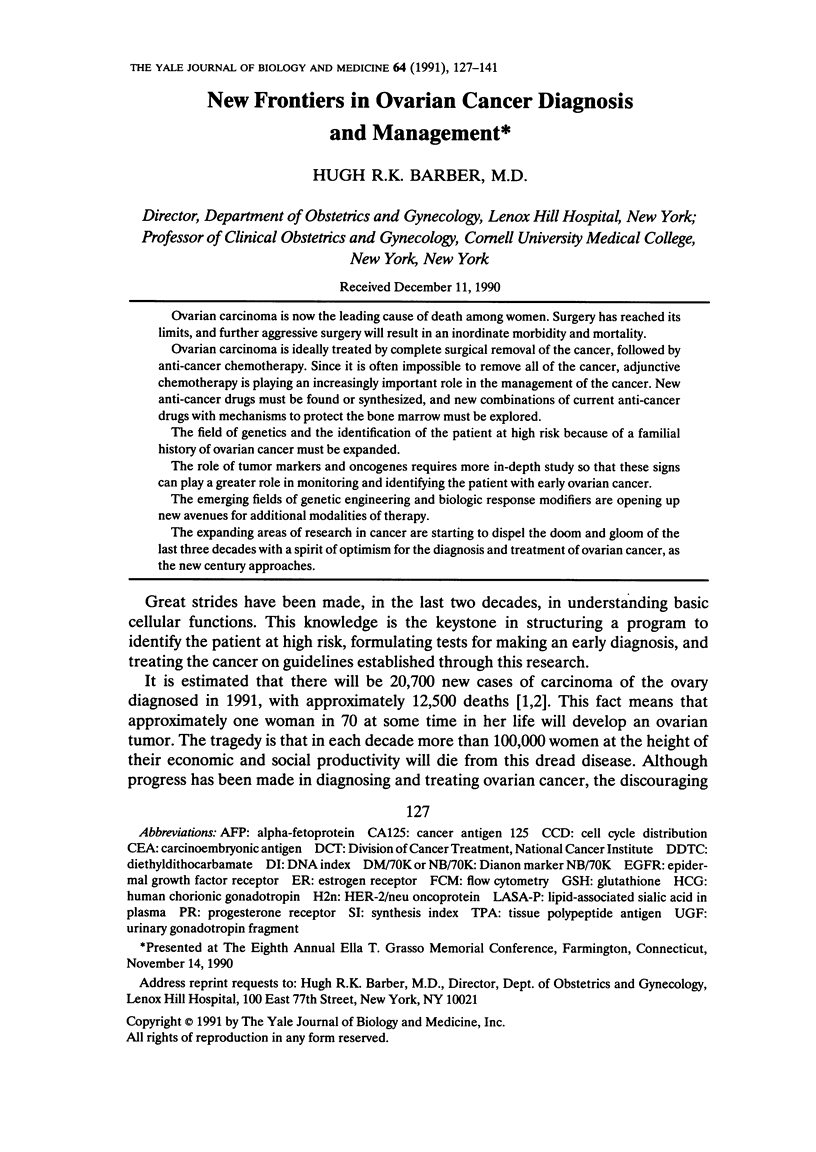
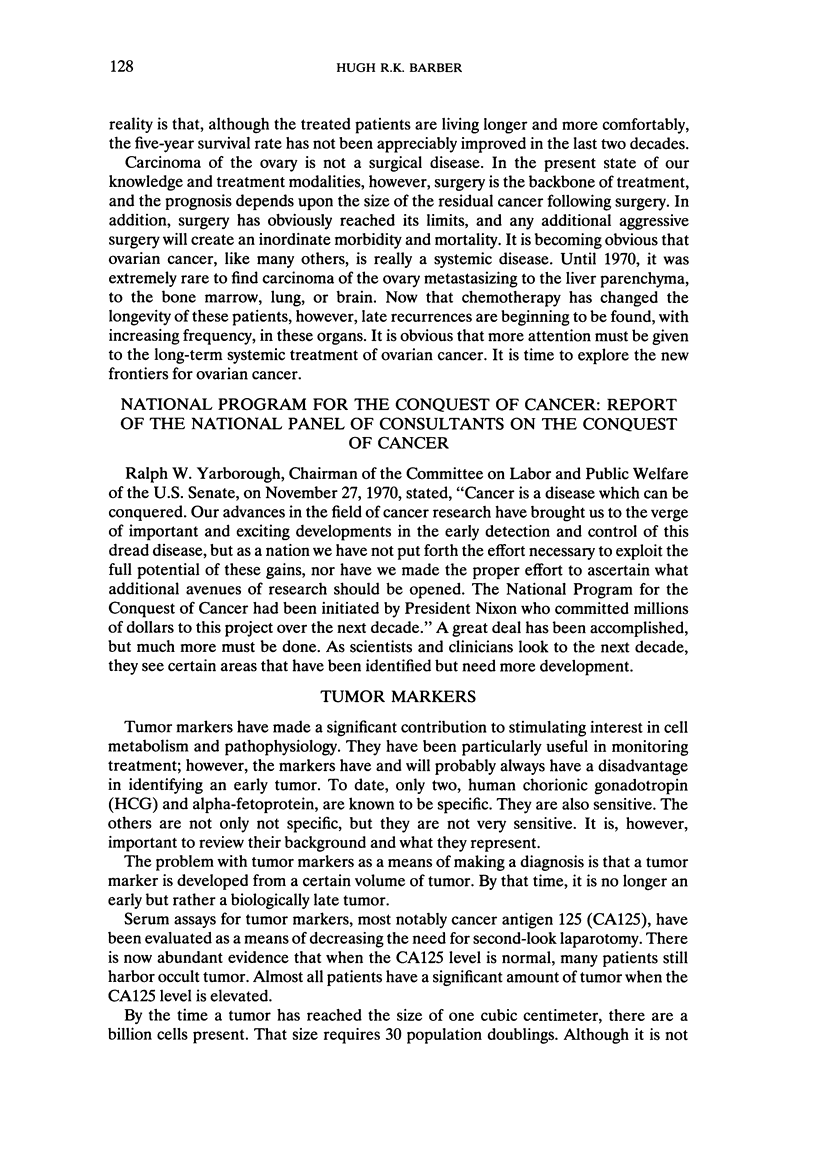
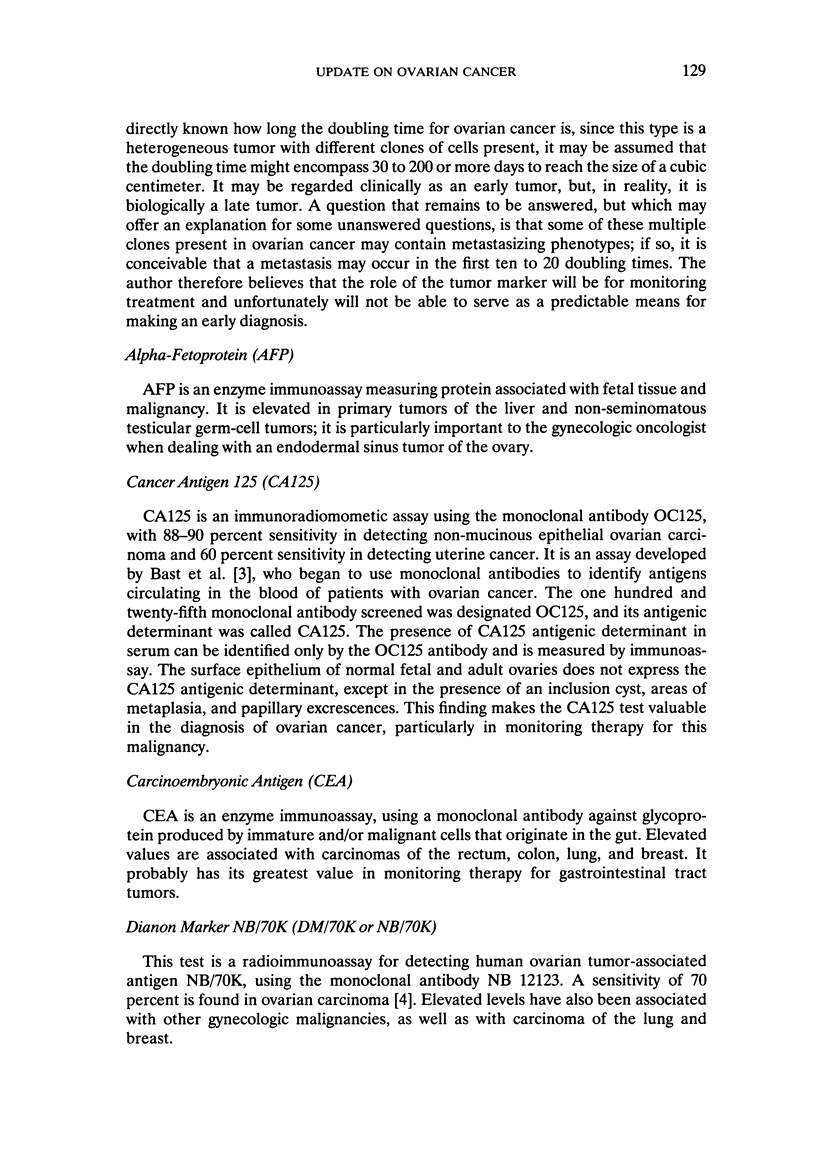

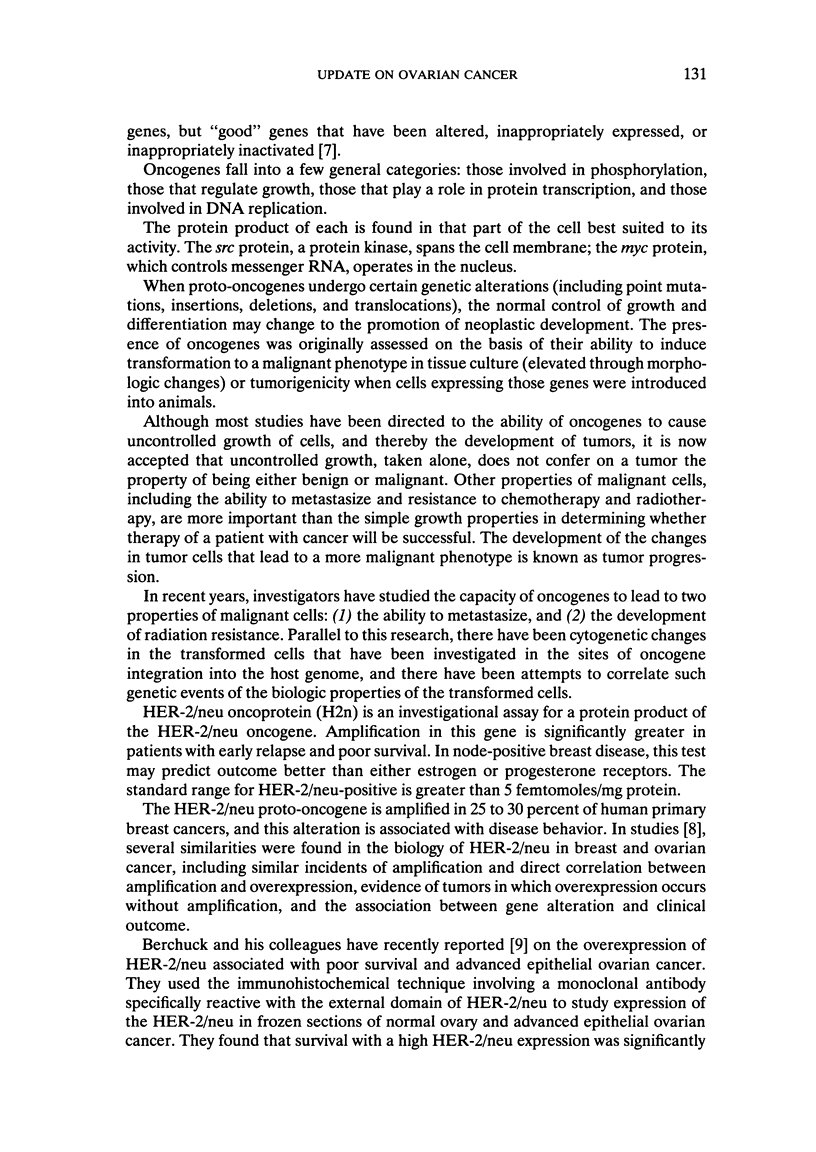
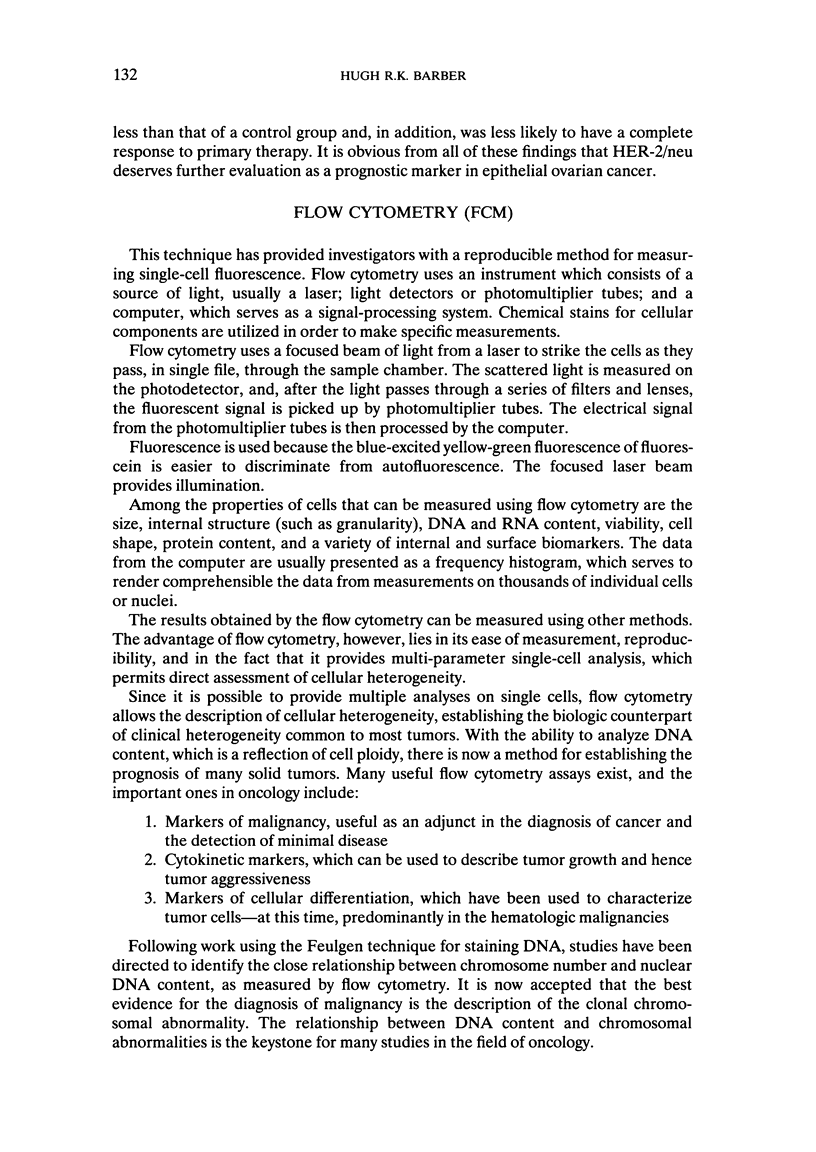
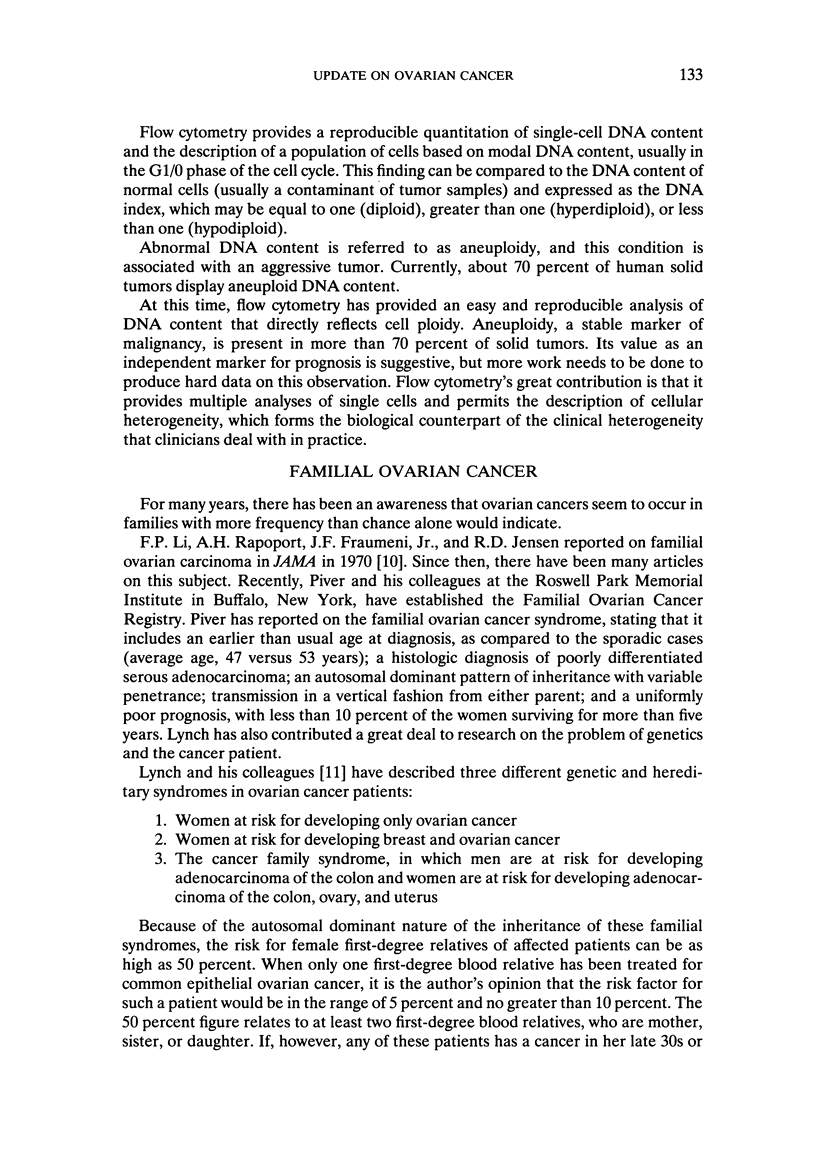
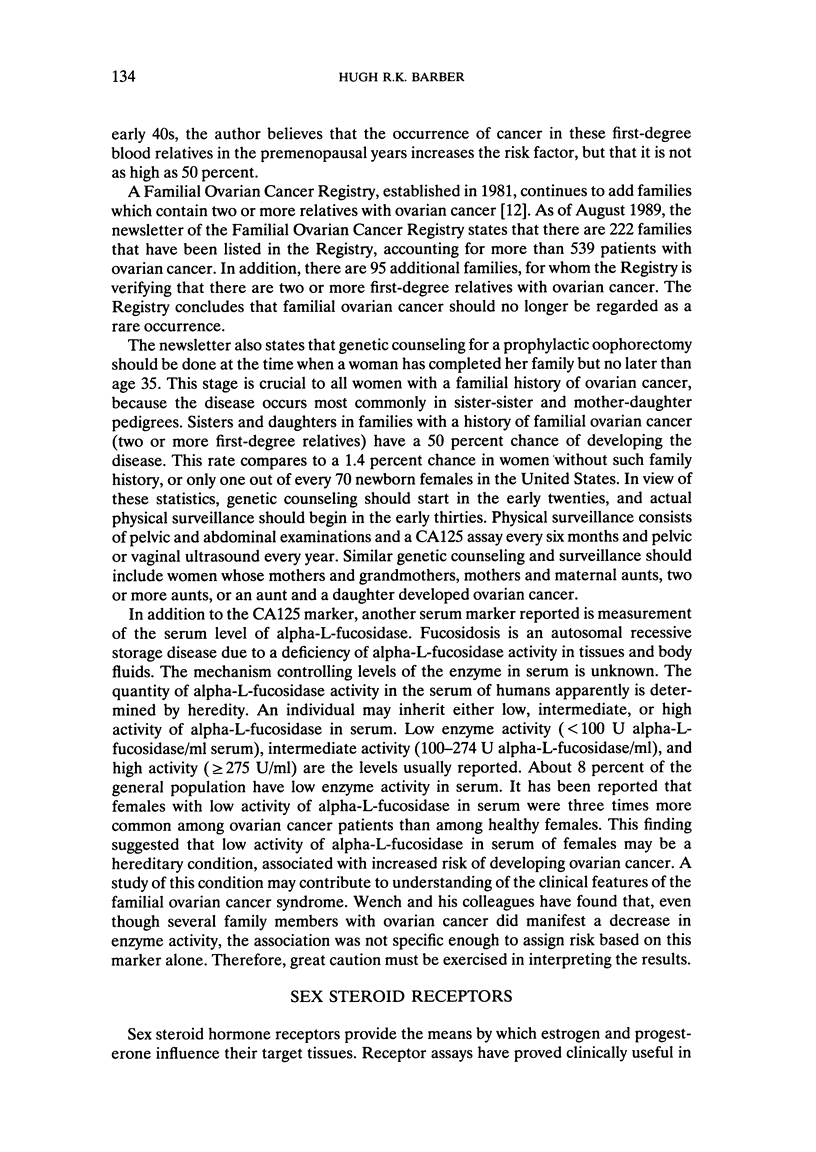
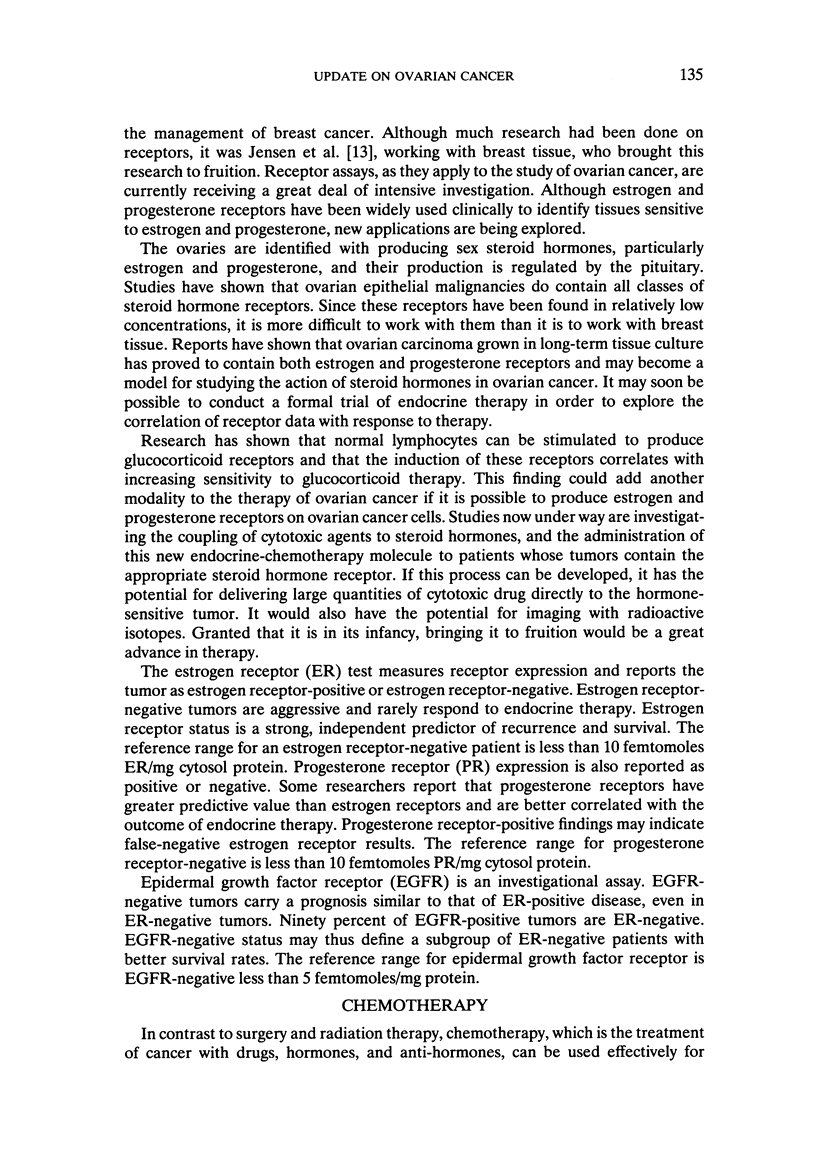
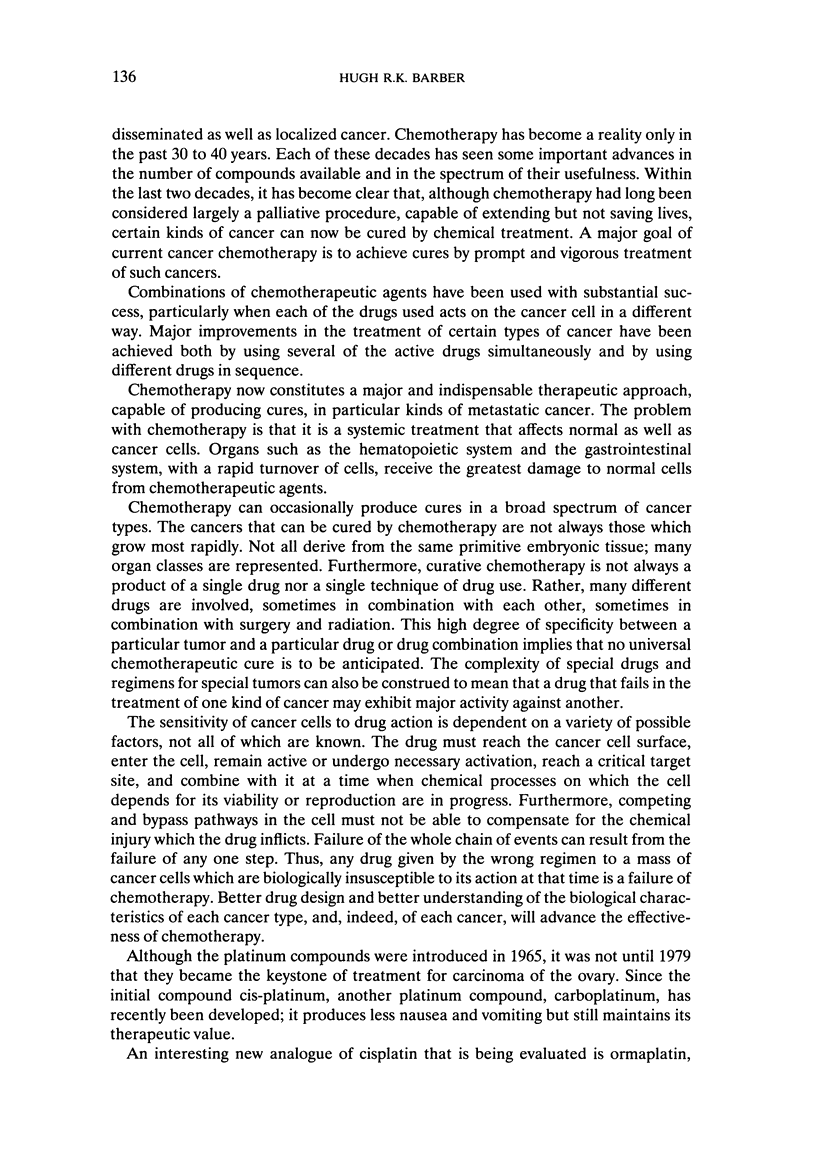
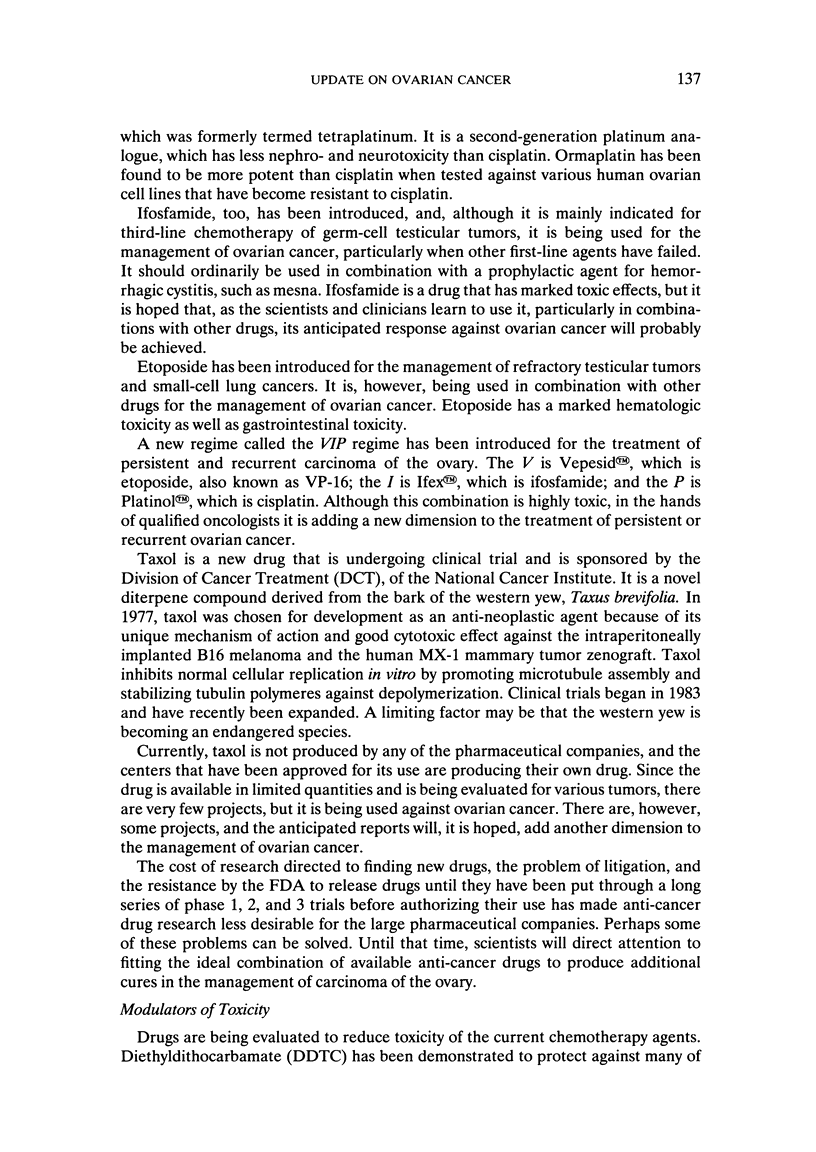
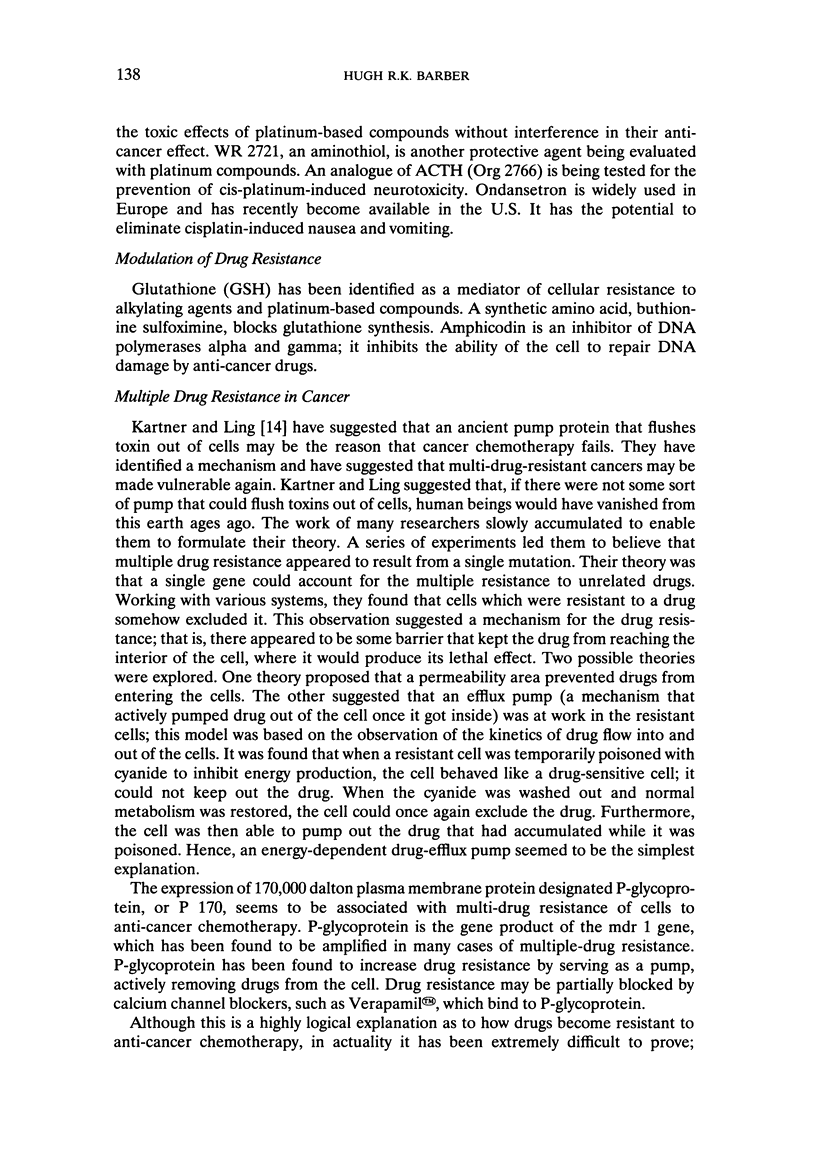
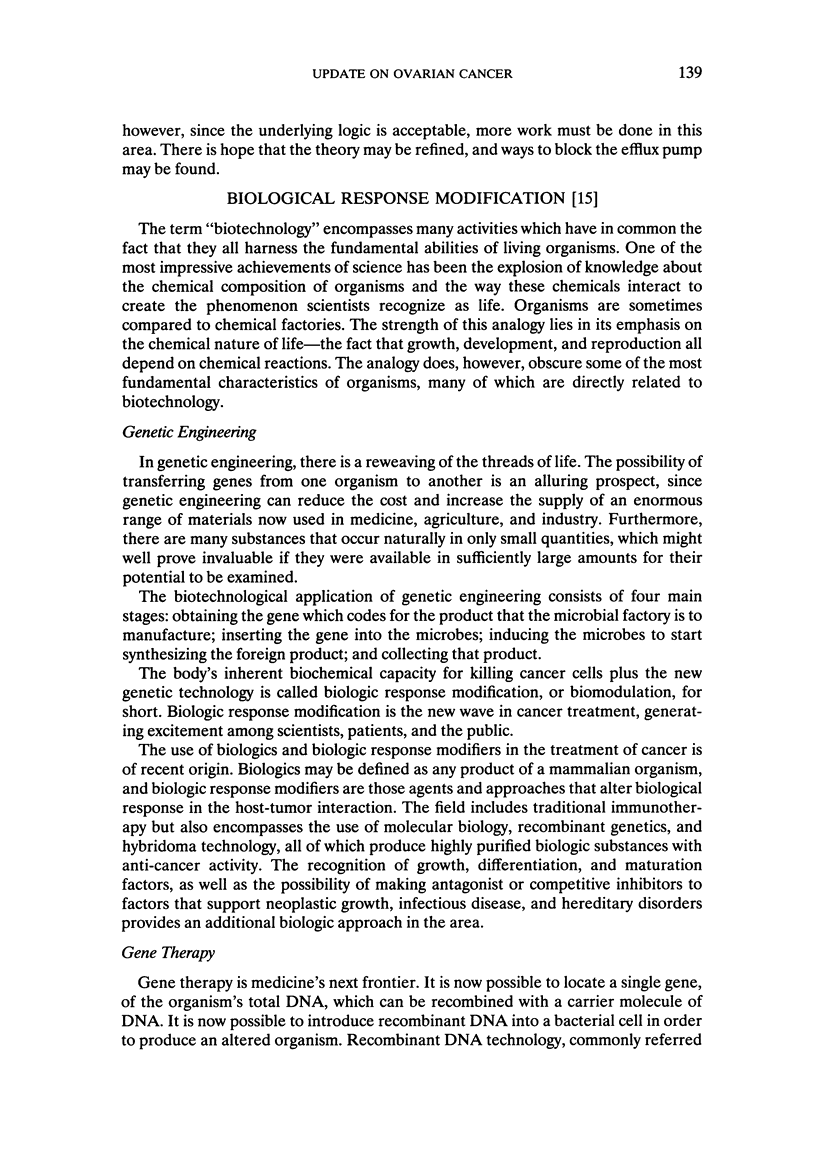
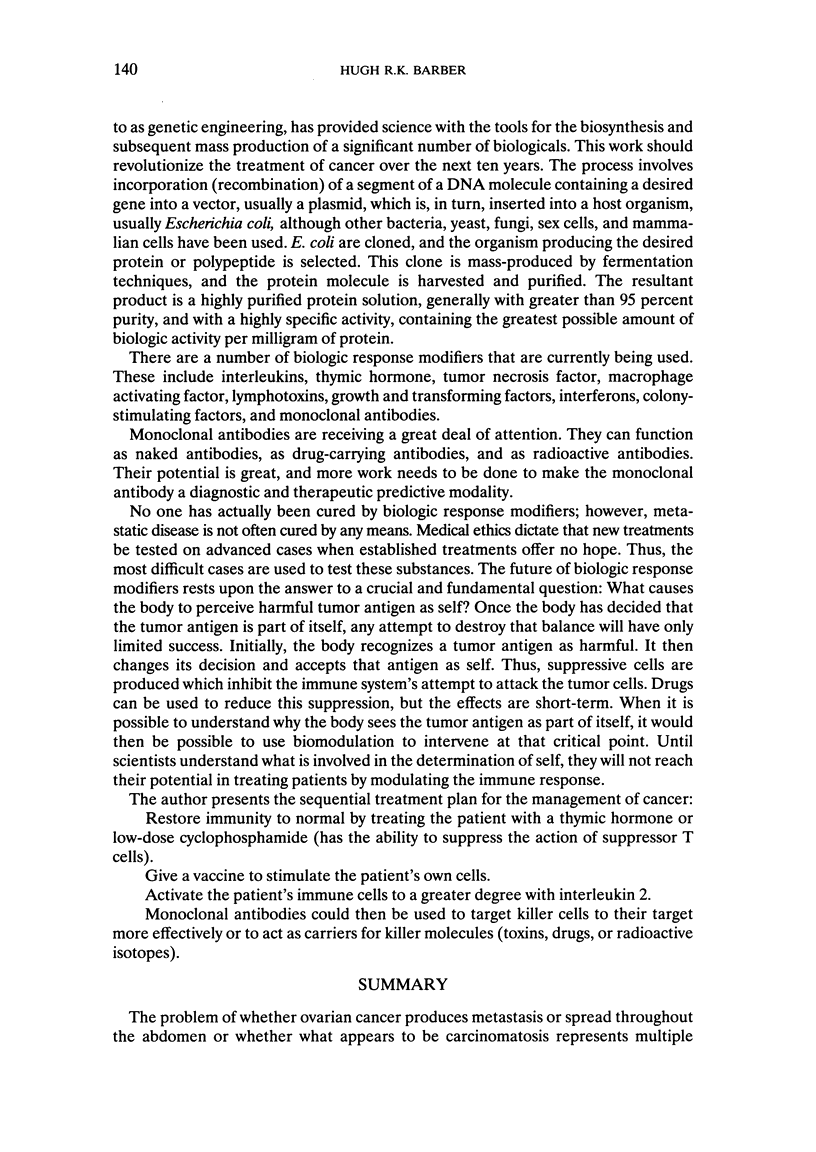
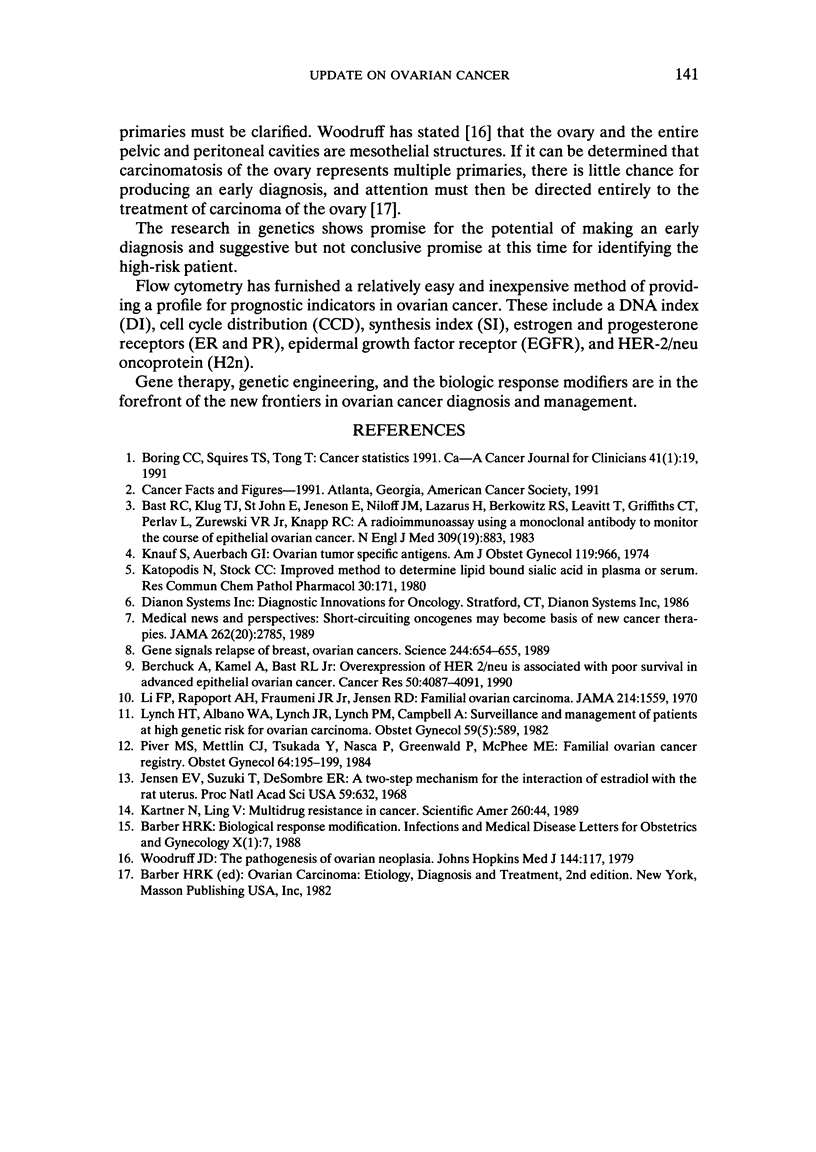
Selected References
These references are in PubMed. This may not be the complete list of references from this article.
- Bast R. C., Jr, Klug T. L., St John E., Jenison E., Niloff J. M., Lazarus H., Berkowitz R. S., Leavitt T., Griffiths C. T., Parker L. A radioimmunoassay using a monoclonal antibody to monitor the course of epithelial ovarian cancer. N Engl J Med. 1983 Oct 13;309(15):883–887. doi: 10.1056/NEJM198310133091503. [DOI] [PubMed] [Google Scholar]
- Berchuck A., Kamel A., Whitaker R., Kerns B., Olt G., Kinney R., Soper J. T., Dodge R., Clarke-Pearson D. L., Marks P. Overexpression of HER-2/neu is associated with poor survival in advanced epithelial ovarian cancer. Cancer Res. 1990 Jul 1;50(13):4087–4091. [PubMed] [Google Scholar]
- Jensen E. V., Suzuki T., Kawashima T., Stumpf W. E., Jungblut P. W., DeSombre E. R. A two-step mechanism for the interaction of estradiol with rat uterus. Proc Natl Acad Sci U S A. 1968 Feb;59(2):632–638. doi: 10.1073/pnas.59.2.632. [DOI] [PMC free article] [PubMed] [Google Scholar]
- Kartner N., Ling V. Multidrug resistance in cancer. Sci Am. 1989 Mar;260(3):44–51. doi: 10.1038/scientificamerican0389-44. [DOI] [PubMed] [Google Scholar]
- Katopodis N., Stock C. C. Improved method to determine lipid bound sialic acid in plasma or serum. Res Commun Chem Pathol Pharmacol. 1980 Oct;30(1):171–180. [PubMed] [Google Scholar]
- Knauf S., Urbach G. I. Ovarian tumor-specific antigens. Am J Obstet Gynecol. 1974 Aug 1;119(7):966–970. doi: 10.1016/0002-9378(74)90016-7. [DOI] [PubMed] [Google Scholar]
- Li F. P., Rapoport A. H., Fraumeni J. F., Jr, Jensen R. D. Familial ovarian carcinoma. JAMA. 1970 Nov 23;214(8):1559–1561. [PubMed] [Google Scholar]
- Lynch H. T., Albano W. A., Lynch J. F., Lynch P. M., Campbell A. Surveillance and management of patients at high genetic risk for ovarian carcinoma. Obstet Gynecol. 1982 May;59(5):589–596. [PubMed] [Google Scholar]
- Piver M. S., Mettlin C. J., Tsukada Y., Nasca P., Greenwald P., McPhee M. E. Familial Ovarian Cancer Registry. Obstet Gynecol. 1984 Aug;64(2):195–199. [PubMed] [Google Scholar]
- Woodruff J. D. The pathogenesis of ovarian neoplasia. Johns Hopkins Med J. 1979 Apr;144(4):117–120. [PubMed] [Google Scholar]


